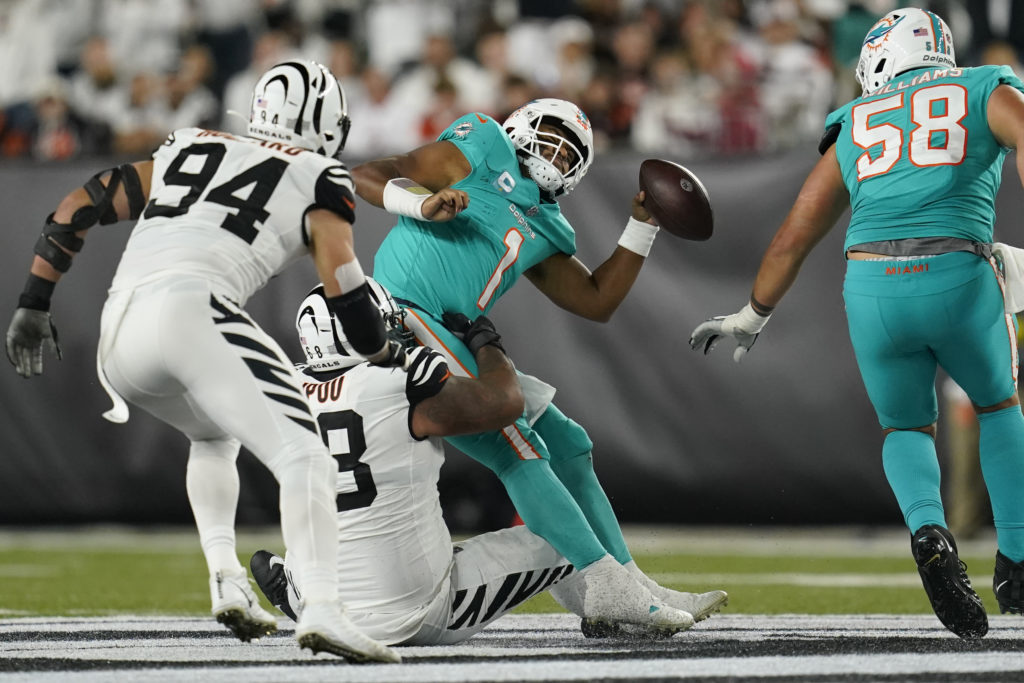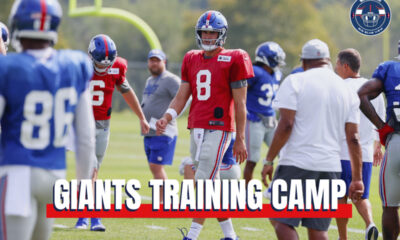
Dolphins QB Tua Tagovailoa received an injury that has been controversial in every single way. From the team’s neurotrauma consultant being fired, returning him to play, his care post game(s), the categorization of his injury and diagnosis… Everything seems to be open for question right now and may be under investigation for a long time to come. I don’t have any answers on this specific situation and speculation is pointless, I’m not a neurologist and wasn’t there. What I do have is a MS in sports science and rehabilitation, a BS in sports medicine, another in exercise science, hold a CSCS and a few other qualifications that help me understand scientific research (see references below) and hopefully explain that research to others accurately. In this case I want to help answer what a concussion is.
First, it is important to understand that when we talk about sports in which physical contact is unavoidable, like football or combat sports, injuries such as concussion can happen even when all currently known preventative measures are taken. We love to watch amazing athletic feats, it’s thrilling! Yet the athletes are people, who will continue on living and aging after their sports careers, some of them will be long but many will be relatively very short. What happens during their sports careers can be life altering, for good or bad. We should all be concerned when known measures are not followed, or are impeded. As sports fans, as parents of kids playing sports and admiring pro athletes, or just as compassionate human beings, proper care of athletes is an important topic. When a young man may have had his health and future detrimentally altered, that doesn’t feel right, especially if it could have been prevented. I wouldn’t want my sons receiving questionable care and placed at risk when there are other options, would anyone?
So what is a concussion? A form of mild head trauma (between 14 and 15 on the Glasgow Scale), cerebral concussion can be defined as a complex pathophysiological process, induced by traumatic forces, and affecting the brain. The cause can be from direct impact on the head (face, cervical region or any other body segment) reaching a certain resulting force in the brain, generating a sudden and transient disturbance in the neurological function (without structural damage), and may or may not lead to momentary loss of consciousness. Let’s think about a football player taking a hit. There is the initial impact with another player then the impact on the ground and possibly other players in between. The brain “bounces” against the skull during such an impact or moves back and forth quickly. Helmets are protective of course but, the brain still bangs around inside the athletes own skull and normal brain function is changed in a harmful way when those tissues are damaged.
Cerebral concussion can occur in any sport or recreational activity. There is actually a very high frequency of incidence, where in the USA alone cerebral concussion represents between 1.6 and 3.8 million cases per year; however, opportunities for this injury present more commonly in competition and sports involving intense physical contact, like football where tackles, shoving, and falling are just part of the game. An occurrence of concussion can and should be verified after a trauma when the athlete experiences symptoms such as headache and dizziness (the most frequent symptoms), disorientation, mental confusion, imbalance, and lack of coordination with possible loss of consciousness. Whatever the symptom, it is of utmost importance to withdraw the player immediately from the area of activity and have a physician evaluate for treatment. Most people will recover within 7-10 days however, the risk for reinjury is the highest within the 10 days after injury. Also, a concussion can affect balance, reaction time, and other sport skills. making the athlete more prone to injury during competition. We all saw Tua lose his balance and know that the medically recommended protocol is to be taken out of play immediately when any signs of concussion are suspected. That didn’t happen, he played, we all watched.
World-wide, SCAT2 (Sport Concussion Assessment Tool 2) is used in athletics including the NFL. It is a battery of neurological and cognitive tests suitable for evaluating concussion and these tests are to be carried out immediately after the questionable event. In some cases, further tests are necessary as over time there may be an onset of other symptoms for the individual. Even though there is so much established research about the cumulative effect of repeated concussions and traumatic blows that contribute to long-term symptoms, cautions and treatment may be purposefully ignored. Left untreated, (even failure to diagnose) concussion can lead to second-impact syndrome, which occurs when the individual suffers a concussion and continues in the activity. Consequently, the individual undergoes new trauma, even if it is “discreet”, which means it can be a thoracic impact (spinal area correlating to the chest, i.e. an upper “back injury”) or a cervical impact (spinal region relating to the neck). If the result is a sudden movement or abrupt cervical flexion (when the back of the head hits the upper back, imagine a PEZ dispenser), the practitioner may feel stunned and immediately lose consciousness, and within seconds or minutes after passing out can go into a coma, possibly leading to death.
It’s not necessary to ruin these men to have great football. It can be disappointing to have a favorite player sit out a time to recover, but they must, otherwise it is negligence. They are people with families and a lot of years ahead of them to enjoy a quality life after football. I want to watch my team play, and all teams play with a clear conscience; that proper care of the athletes’ health is in place and being honored.
REFERENCES:
Barbosa, M., (2011) The brain concussion in sport. Revista Medicina Esportiva Informa. 2 (6), pp. 14-16.
Pabian, P., Greeno, E., Heiden, M., Hanney, W., (2013) Sport Concussion: Implications for the Strength and Conditioning Professional. Strength & Conditioning Journal. 35 (4): 72-80, August 2013.
Souza, C., (2003) Concussion, and the second impact syndrome: What it is and its importance in sports clinic and psychiatry. Psychiatry On Line Brazil. No. 8, Vol. 08. August 2003.
Thomas, R., Alves, J. Vaska, M., Magalhaes, R. (2016) SCAT2 and SCAT3 scores at baseline and after sports-related milk brain injury/concussion: qualitative synthesis with weighted means. BMJ Open Sport Exerc Med 2(1):e000095. doi:10.11136/bmjsem-2015-000095
Wein, H. (ed), Hicklin, T. (ed) (2013) A bang to the brain; what we know about concussions. NIH News in Health. health.nih.gov.












